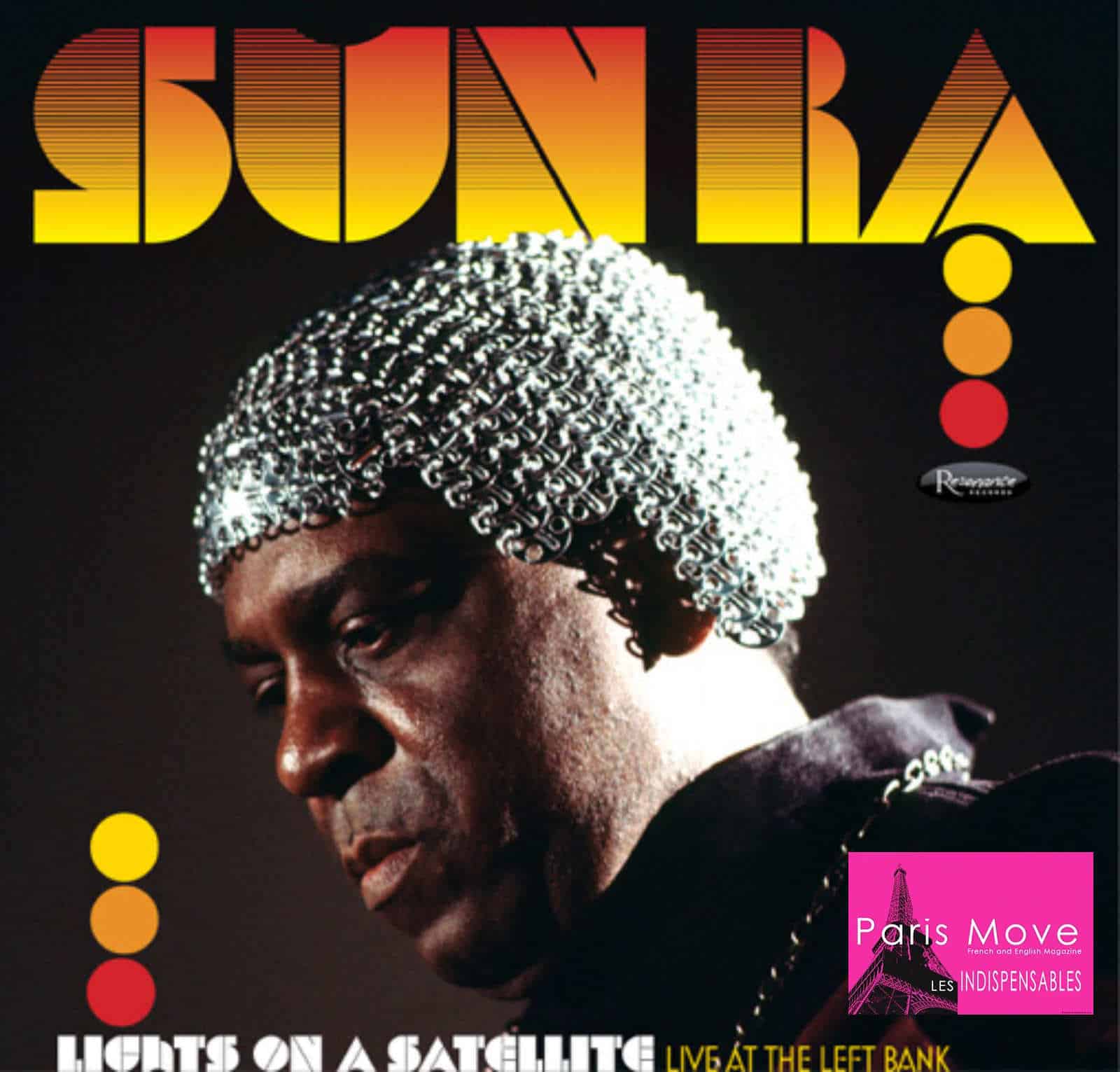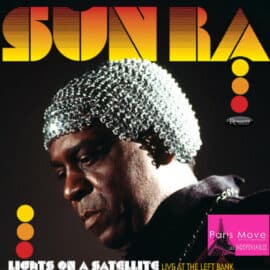| Funky Jazz |

Here is yet another live album from Sun Ra, soon to be released on the remarkable Resonance label, renowned for its expertise in reviving forgotten works. This album promises a more accessible experience than its predecessor (*Sun Ra – At The Showcase Live In Chicago 1976-1977*, which I discussed with you last April here). This new album, recorded in 1978, reflects a gentler tone than before; between 1976 and 1978, the social landscape had begun shifting, and music’s experimental fervor yielded to a return to melody for many bands of the era. This shift is clear from the first track, just after the introduction, with *Tapestry from an Asteroid*. These unreleased recordings from Sun Ra’s 1978 concert with his Myth Science Cosmo Swing Arkestra are presented here as a two-vinyl limited edition, set to launch on Record Store Day’s Black Friday, November 29.
Co-produced by Zev Feldman and Sun Ra archivist Michael D. Anderson, who also played drums at this 1978 concert, Feldman remarked on this rediscovery: “It was thrilling to learn from Sun Ra’s archivist, Michael D. Anderson, that these 1978 Left Bank recordings even existed. Filmmaker Robert Mugge was also very generous in allowing us to incorporate music he recorded for his film, which is now featured here as bonus tracks. Thanks to Mr. Mugge, we included several high-resolution stills from his film, capturing the evening’s vibrant energy at the Famous Ballroom.”
As always with Sun Ra, one faces a meticulously orchestrated sound experience. In the ‘70s, we all dreamed of space exploration, and Sun Ra’s work channels this societal dream. By 1978, however, there’s more—interpretations of *Somewhere Over the Rainbow*, Miles Davis pieces, and a climactic rendition of *Round Midnight* on the second CD. In his arrangements, Sun Ra challenges conventional norms, and through these pieces, his genius in pushing jazz’s boundaries is unmistakable.
Reflecting on his first foray into music documentary with the Left Bank concert, Mugge recalls: “It went surprisingly well, despite one unresolved question: could we record a large ensemble without multitrack equipment or even the necessary cables to connect to Vernon L. Welsh’s sound system mixer? But sound technician Bruce Litecky improvised, capturing usable audio by directing one mic towards the PA speakers and another towards the lead musician or vocalist.”
It was an era of resourceful innovation—when all it took to succeed was skill and a bit of genius. Contrast this with today’s musicians, hoping their iPads, laden with sheet music, last through the performance. How times, and anxieties, have changed…
In his retrospective, Considine notes that the 1978 concert’s music resonated with both seasoned Sun Ra fans and younger listeners: “For the regulars, there was much they recognized, such as Sun Ra’s arrangement of Tadd Dameron’s classic *Lady Bird*, which distilled the mid-century jazz story… and for the younger crowd, raised on rock, there was the sonic collision of Sun Ra’s synthesizer with Dale Williams’ exploratory electric guitar on the aptly titled *Thunder of Drums*. Here, African rhythms melded with avant-garde improvisation, pounding electric bass over classic swing cadences, a fusion of heartfelt emotion with transcendental awareness.”
The first CD ends with a Miles Davis cover (*Lady Bird/ Half Nelson*), where Sun Ra weaves alien creations into his cosmic world, adding his signature flair—a blend that delights and entertains. This extraordinary document offers a fresh experience of Sun Ra, one that brings new insights when revisiting his music decades later; once deemed too advanced for his generation, he has now become a ‘classic.’
Weighing Sun Ra’s impact on jazz, saxophonist Bartz declares: “Sunny taught us that as musicians, we must be free. We can’t allow ourselves to be confined to one genre or style. If you study music, you study sound itself, and like any subject, would you study just one type of sound? Or would you study all sounds? I don’t study just one kind of music. I study music. I learned that from Sunny.”
Pianist Taborn adds: “Today, many revere him. His approach encompassed the entirety of the Black musical experience, offering a commentary on past, present, and future, which keeps his music relevant, even 30 years after his death.”
The artist’s freedom, which typically demands a high level of musical expertise to pull off, is evident in every member of the Arkestra, each adding to the brilliance that rightly made Sun Ra famous.
Reflecting on Sun Ra’s avant-garde conducting methods, saxophonist and flautist Allen—marking 66 years with the Arkestra—recalls: “When Sunny played, he would play four bars, and if you didn’t have the music, he’d move on, switching to another piece, so you had to remember it all. If he played four bars and I didn’t start, he’d change songs, and by the time you caught up, he was on to another one. Above all, you had to be sincere to do what he wanted you to do.”
In sum, this double album, with its unique recording conditions, stands as one of the finest I’ve heard to date, a true masterpiece—made even more exceptional by the digital restoration work that makes it a worthy entry into our “Indispensables” of 2024.
Thierry De Clemensat
USA correspondent – Paris-Move and ABS magazine
Editor in chief Bayou Blue Radio, Bayou Blue News
PARIS-MOVE, October 27th 2024
Follow PARIS-MOVE on X
:::::::::::::::::::::::
